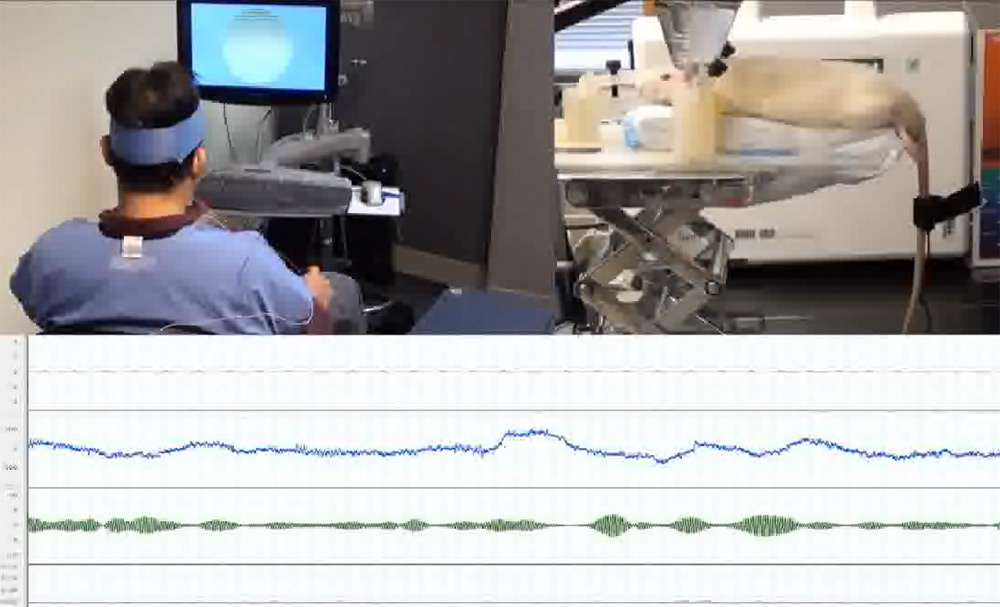Man Wiggles Rat's Tail Using Only His Thoughts

By linking the brains of a human and a rat, scientists have now helped a man wiggle a rodent's tail using only the man's thoughts.
These new findings are the first case of a brain-to-brain interface between species, and the first example of a noninvasive brain-to-brain interface, researchers added.
In February, scientists revealed they linked together the brains of two rats. This first known instance of a brain-to-brain interface apparently helped the rodents share data to accomplish certain tasks, even across intercontinental distances. However, this advance depended on microscopic electrodes implanted in the rats' heads.
In the latest example of a mind-meld, researchers employed noninvasive techniques to link the brains of a human and a rat. The man had electrodes stuck onto his scalp that picked up brain-wave activity. The rat was placed in a machine that focused ultrasound pulses through its skull to its brain, and was anesthetized so that it would not wriggle its head during the experiment.
The volunteer had a video screen placed in front of him that displayed a flickering pattern of light. If he paid attention to the screen, his brain waves would synchronize with the strobe light. If he looked away, or even if he looked at it while thinking of something else, his brain waves would not synchronize with the light flickers.
When the man focused on the flickering pattern, that action signaled the ultrasound to stimulate the part of the sleeping rat's brain responsible for moving its body. In response, the rodent flicked its tail. The interface was accurate 94 percent of the time, with a time delay of only about 1.6 seconds from the moment the man initiated his intent to the rat tail's wiggling. [Video - Watch Man Wiggle Rat's Tail With His Mind Only]
"This is the first noninvasive attempt to achieve a brain-to-brain interface," researcher Seung-Schik Yoo, a neuroscientist and bioengineer at Harvard Medical School, told LiveScience.
Sign up for the Live Science daily newsletter now
Get the world’s most fascinating discoveries delivered straight to your inbox.
Yoo noted this interface was little more than an on-off switch. Still, he added that brain-machine interfaces are getting increasingly advanced over time, enabling people with paralysis to control robot arms.
In the future, interspecies brain-to-brain interfaces could help search-and-rescue operations, Yoo suggested.
"Dogs have an incredible sense of smell that humans don't have. If somehow there was a way to link up olfactory sensation, we could definitely benefit by enhancing our capabilities," Yoo said.
Brain-to-brain interfaces could also link people together. "You could imagine delivering any [thoughts] you want to another person, or do the same thing with many people, or have many people do the same thing to you," Yoo added. "You could imagine people feeling and deciding collectively, which makes me think of the Borg in Star Trek."
"Maybe Tiger Woods can record his brain activity when he plays golf, and when I match it to my brain, I can quantify what the differences are and learn that way, not just do video analysis," Yoo said. "But this is far-fetched at the moment."
Scientists are a long way off from using this technique to control people, Yoo cautioned.
"You'd first have to know how to interpret brain activity fully, and we can't do that now — the science is not there," Yoo said. "So don't worry that the government will come up with a secret way of controlling the brain."
The scientists detailed their findings online April 3 in the journal PLOS ONE.
Follow us @livescience, Facebook & Google+. Original article on LiveScience.com.











